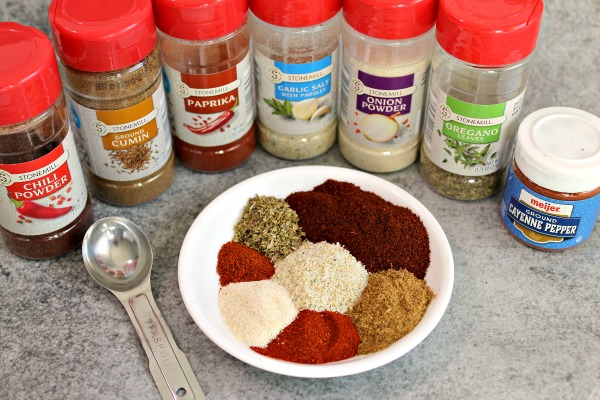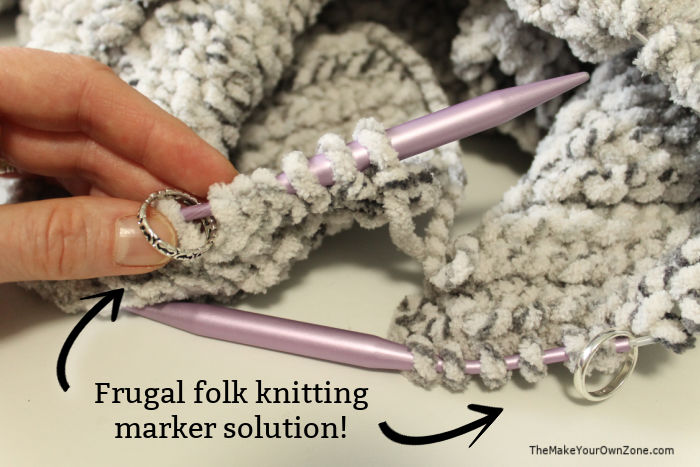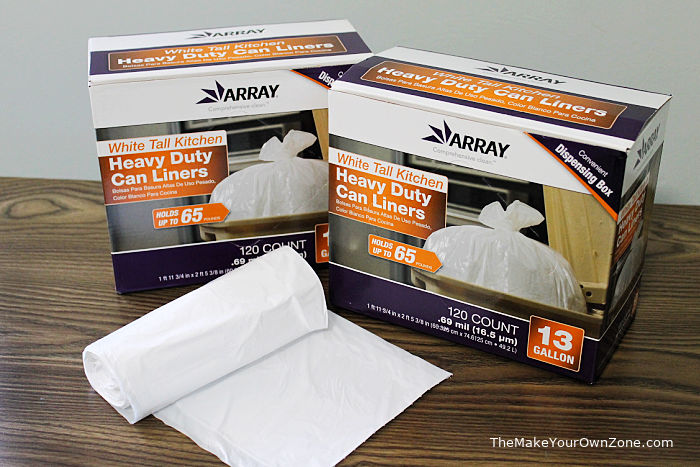Frugal Advice from 1995
This post may contain affiliate links. Please read my disclosure policy for more information.
I recently pulled a book off my bookshelf that I hadn’t thought about in a long time. That book was the Tightwad Gazette II, the second in a series of these books that were compilations of a popular newsletter about frugal living. And yes, it was a newsletter that came in the mail back in the 1990’s before everyone had email and computers. That’s starting to seem like a very long time ago!
I remember really enjoying these books back in the day. I was a young mom on a tight budget and I was happy to find any frugal ideas that I could. And now, almost 30 years later, I still enjoyed looking through this book and spent way more time than I intended as I browsed through its pages. Sure, some of the advice is getting outdated (is your Wite-Out getting gunky? Thin it down with nail polish remover!). But it was also a good reminder once again that even though the specifics of frugal living might change, the basic lifestyle and mindset does not.
I wrote on this subject once before after I read a very old book and discovered that frugal advice from 1829 still mirrored how frugal folks think today even though our day-to-day lives are lived very differently than they were 200 years ago. The same thing hit me again as I paged through my old Tightwad Gazette book. Although life now doesn’t look quite the same as it did in the pre-internet days of 1995, the attitudes and behaviors of frugal folks are, in fact, still very much the same.
What I liked the most about the Tightwad Gazette books was that they weren’t just an endless list of tips, and it wasn’t just another look at using double or triple coupons (something that was popular back then but was never available in my area anyway). Instead, these books were more of an inside look at how the minds of frugal folk think and how that often plays out in day-to-day life.
So here are a few themes about frugal living that kept recurring as I read my trusty old Tightwad Gazette. If you’re new to frugal living, adopting these ways of thinking can be very helpful in moving you toward a goal of maximizing your money and resources. And if you’re already a seasoned “frugal folk”, then you’ll probably find yourself smiling and nodding in agreement as you read the points below and think to yourself, “Yup, I do that too!”
1. Always Be Comparing
Perhaps you’re familiar with the salesman’s mantra of “Always Be Closing” (meaning to always be moving toward finalizing the sale). After reading my Tightwad Gazette book again I have a similar mantra for frugal folks – Always Be Comparing.
One of the things I most loved about Amy Dacyczyn, the author of the Tightwad Gazette, was that she was always doing the math. She was always comparing prices and comparing options because sometimes what you think might be a cheapskate option turns out to not be so great after all. Many of her articles were about her helpfully doing the calculations so the rest of us could benefit, and she was a strong supporter of keeping some kind of a price book for grocery items you buy often so that you can record, compare, and learn what the best deal really is.
This is pretty timeless advice and even though in the 1990’s a paper notebook to track prices was about our only option, today you may find yourself making a spreadsheet or discovering a helpful app on your phone for this purpose.
Sometimes I do something as simple as keeping the receipt in my purse from my Aldi shopping trip (which is usually the cheapest food option for me). Then when I’m in another grocery store, I’ll pull the receipt out and do a quick comparison on some of the items just to make sure Aldi was in fact a money saving option.
Comparing prices is a little bit like exercising your body. You may not be doing it every day, all the time, but it’s something you need to do consistently if you’re going to get benefit. It may fluctuate for what items you’re learning about, but the mindset to Always Be Comparing will certainly keep you on a frugal path.
My example: A few years back I did a little looking into the cost of homemade cleaners compared to store bought cleaners. Most of the DIY options were indeed cheaper, but I was very surprised to learn that one of the homemade options was not, something I would never have learned if I had not taken the time to compare.
Read More – –> How Much Money Can You Save With Homemade Cleaners
2. It’s Ok to think about the small stuff
Sometimes it can almost seem a little silly to go to all the work of comparing just to learn you can save a few cents here or there. BUT – all these little savings can add up! This book also points out that there are also many more opportunities for small savings than big savings. How often do we make big purchases like a car or a home? Maybe only a few times in our lives will we be thinking about how to save on those larger purchases. But every week we go to the grocery store and buy many small items and it’s very appropriate that we think about how to find the best prices on those items too.
My experience has been that it’s worth it to think about these smaller money-saving successes because they keep me in the habit of thinking frugally which can lead to new discoveries. Remember that it’s Ok to think about the small savings. Every little bit helps! I love this quote from Benjamin Franklin: “Beware of little expenses. A small leak will sink a great ship.”
My example: One of the early recipes I shared on this blog was when I learned how to season a single pound of ground beef for tacos with my own spices instead of buying a packet of taco seasoning. I proudly announced my success to Bob who replied, “So . . . you saved us 35 cents?” Well, yeah, it didn’t seem like much at the time – BUT – it helped propel me onward and I’ve learned many more money-saving homemade options in the years that followed because of those early small accomplishments.
Read More – – > Taco Seasoning for 1 Lb of Ground Beef
3. Finding potential in things others might toss out
In browsing this old book I saw many examples of ideas her newsletter readers had shared for how they repurposed old things into new things. This is classic frugal thinking going back to the days when our grandmothers cut up their old dresses to make bed quilts. Some of the examples from 1995 were cutting up old credit cards into guitar picks, and cutting old shower curtains into baby bibs. There was an entire article on cutting up pantyhose into different things, but most women seldom, if ever, wear pantyhose anymore these days.
Today finding the potential might look more like using the backside of papers you unintentionally printed off from your computer printer!
It never hurts to give a second look to something before you toss it out no matter what historical time we’re living in. You might just find another purpose for it that can save you a bit of money.
My examples: One of the suggestions in the book was to use old bread bag tags for knitting markers. Honestly, I don’t think that would work so great, but I recently did have to solve a knitting marker dilemma. I didn’t have any markers that were large enough to fit over the size 13 needles I’m using for a current project. Rather than run right out to the craft store to buy what I needed, I sat and thought for a moment. What might I have around the house that could work instead instead? I ended up going to my jewelry box and using a couple of inexpensive costume jewelry rings that I have. They’re working perfectly and I didn’t have to spend any extra money!
I’ve also saved lids others might have thrown out to see if they fit on my canning jars and I save my egg cartons and dryer lint for homemade fire starters!
Read more – – > Creative tops for Canning Jars and Homemade Firestarters
4. Sometimes it’s what you DON’T do
There’s one section in this book where Amy writes about newspaper and TV reporters wanting to do pieces about her and asking her to do something frugal so they can take a picture. She grew quite weary of this to the point of saying, “OK, I’ll get in my car and wave as I drive right past MacDonalds where I’m not going to eat”. So true!
We often want being frugal to be about active things we can do, but many times it’s about things we’re willing to forego, or be patient about until we feel the time is right to spend the money. You need to find the right balance here because you don’t want to get yourself in a funk of feeling like you have a life of deprivation. But taking the humble option and being willing to be patient are certainly frugal virtues that will serve you well in the long run.
My example: I found myself chuckling when I came across an example in this book that was the exact same thing I did. It was someone who said the gas gauge had broken in their car so they just used the trip odometer instead. After a certain amount of miles, they knew it was time to get more gas. I did this for three years with one of my vehicles! It was an older vehicle and it was kind of an expensive fix. So instead, every time I filled up at the gas pump, I just reset the trip odometer. Once I got in the habit of doing this, it really wasn’t a big deal. It was just the new normal. I ended up trading that car in when it was 16 years old for a newer vehicle and never did spend the money for a new gas gauge.
5. Frugal solutions can be in untraditional places
The final theme I kept seeing in this book was that people were willing to think outside the box for places that could hold the answer for an inexpensive way to acquire things or fix something. One person shared that they got firewood very cheaply from a log cabin manufacturing plant near their home. Another person shared that she was given a second-hand bike for a child but a pedal was broken. She called a local technical college and they were willing to have a welding student fix it for free just to get the experience. Some folks were going to janitorial supply stores to get cleaning products at a good price.
Always keep an open mind for where you might find a frugal solution. Sometimes the best deals are in untraditional places.
My example: For several years now I’ve bought my trash bags at Gordon Food Service, a distributor here in the Midwest that sells items in larger pack quantities to the food and restaurant industry, however they also have some retail stores where the public can shop too. Because this is a non-perishable item, I usually buy a couple of the 120 ct boxes and I’m all set for trash bags for a long time, and at a good price too. However it’s been a while since I’ve done a price comparison so I might have to come full circle here and go back to my first point – Always Be Comparing – just to make sure again that it’s the best deal!
Any time is a good time to be frugal!
If the current high prices are getting you down, perhaps some of this timeless frugal advice can help you too. Even small steps can get you started.
Start comparing a few prices that perhaps you didn’t pay attention to before.
If those comparisons only yield small savings, remember that’s OK – every little bit helps!
Look at things you already have and see if you can repurpose it, or recycle something to be used in a new way.
Now matter how far along you are on your journey, any time is a good time to be frugal!
Oh, and if your Wite-Out is gunky, just thin it down with some nail polish remover {OK, just kidding on that one . . . I’ll quit making old people jokes now 🙂
Check out more of my frugal posts here – – > Frugal Articles









As a child of the 60’s my first frugal do it yourself down to Earth ideas came from Mother Earth News.
With many young families choosing homesteading and homeschooling all these frugal ideas you share are a great help.
Yes! Going green and being frugal with your resources may seem like a newer idea to many of the young folks, but those ideas were around much earlier in the days of the Mother Earth News magazine too!
That Amy taught her readers how to think frugally and always do the math is what has made her books timeless. Just today I got out a calculator and did the math, combined with some online research, to easily save $3 on a basic household good.
So true! Doing the math is indeed a timeless strategy for being frugal and her books did a great job of always breaking down the numbers.
Oh, good memories!! I also subscribed to the Tightwad Gazette when it was mailed and have all of the books. Amy’s attitude of doing these things for the challenge and fun of it, not just for the savings, made her tips even more fun. Remember “Much Ado About a Muffin”?!
Yes, I do remember the long article she had about making muffins! 🙂 After doing the math, she always maintained that muffins were one of the cheapest breakfast items you could make. I loved that her muffin “recipe” was more of a template and that you could substitute in different ingredients to stay resourceful and use up what you had.
Bev, this is a great post! I used to subscribe to Amy’s newsletter and always enjoyed reading about her philosophy, all the experiments, etc. I set up my own “price book” that was very eye opening. Now I keep an eye on prices and keep my receipts for a while which allows me to pretty much know what prices are. We have been able to live a cost-effective life, staying out of debt which allowed my husband to retire early. While others were buying new cars every few years, going on expensive vacations, buying trendy clothes for themselves and their kids, etc. we were more frugal and it has paid off! My husband fixed our cars, did household repair work himself, etc. I cooked from scratch, minimized purchasing new and pricey kid things, did the yard work so we would have weekends free, made most of my own household cleaners, etc. Using and re-using items has been our mantra. Wouldn’t have it any other way!
Another advantage to making your own products is that you know what goes into them. That is especially significant when making your own food items.
Really enjoyed this article. Really chuckled at the White Out comment! Thanks for a great “blast from the past”!
It sounds like we think alike Norma! Being frugal does indeed pay off and it’s great you’ve been able to reap the benefits of it in your retirement years.
I love these books. Always have, always will.
Got mine at garage sales of course.
Yes some of the tips are outdated but the mindset
is the same.
When I was a young wife and then mother I quickly found
out I was alone in my way of thinking and living. Friends and
family thought my husband and I were crazy. Well 38 years
later we have a house (on my husbands only paycheck) . Friends
still work. My husband is retired early. Friends still work. March 2020
We sheltered with food, supplies and yes toilet paper. Friends still work.
Yep, we are crazy….friends still work.
Blessings to you 💜
Minnie
So true Minnie! This reminded me of what Dave Ramsey often says: “Live like no one else now, so you can live like no one else later”. I’m so glad being frugal has allowed you to enjoy early retirement. Good work!
I instantly recognized this book as one I had also read in the 90’s. I think during that time I read every book I could find to save money. Funny that I’m also still doing this today, only now I read blogs! Being frugal doesn’t go out of style, and with the current state of the economy, I think it’s very helpful to find ways that help stretch your dollar. Thanks, Bev!
I’ve often thought that the author of the Tightwad Gazette (Amy Dacyczyn) would have made a great blogger!
I agree!!